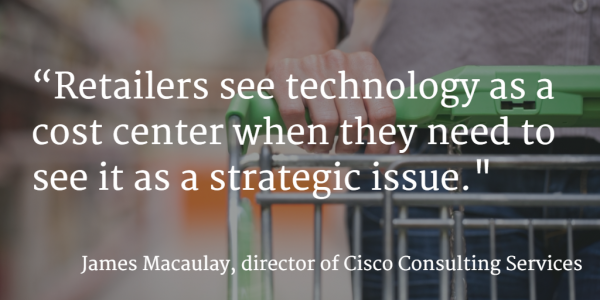This great article published by CMO.com (an Adobe publication) two days ago, “Digital Disruption In Retail: Marketers’ Work ‘Not Even Close To Done’,” has four great takeaways for retailers facing the concept of digital disruption and transformation.
Lesson 1: Marketers and merchants are still trying to work through the growing pains of omnichannel retail
Many large retailers are still figuring out how to:
- keep up with eCommerce and mobile shopping and work it into the consumer shopping experience.
- adopt digital tools in-store
- integrate inventory and systems from online and in-store sales.
These forces are combining to create a perfect storm of challenges for retailers. Those who are embracing the change and addressing the opportunities and problems will succeed, while others will get left behind. The article also provides some stats as to how many retailers truly seem to still be in denial about this industry-wide shift.
“45% of companies didn’t deem the subject worthy of discussion at the board level. About one-third of companies are still taking a wait-and-see approach, and only 25% said they are being proactive and disrupting themselves to stay competitive.”
Lesson 2: Investing in digital transformation is worth it
Target’s CFO, in a recent earnings call, said as shoppers become engaged in digital channels, Target sees incremental sales and profits both online and in stores, and Target has seen a 40% growth in digital sales during the past quarter -“a meaningful opportunity” to generate sales growth in the channel.
Meanwhile, WalMart is investing more into its Site to Store service, now known as Wal-Mart Pickup, as well as eCommerce and the mobile consumer experience.
“We are investing to win the future of retail, and I’m excited about the possibilities that our improved e-commerce capabilities will provide,” said Doug McMillon, president and CEO of Wal-Mart Stores.
Lesson 3: Some millenials are “gaming the system” of personalization and segmentation
“37% of all shoppers (and 47% of Millennials) have intentionally abandoned an item in an online shopping cart to get the retailer to retarget them with a discount or incentive to close the sale.”
Wow! I didn’t even know this was a tactic that was occurring.
“Some shoppers are even faking their birthdays when they sign up for newsletters in order to get discounts.”
We have said in many posts on this blog that the consumer is now in more control of their shopping experience than ever before. These examples are case-in-point.
Lesson 4: Loyalty programs are becoming less popular
This trend surprised me.
According to a new EY study (PDF), many loyalty programs are backfiring in their intent because shoppers are reporting that they feel obligated to use the loyalty card/number just so they don’t feel ripped off, rather than as an incentive to make it a point to go out of their way to that particular store.
“Participation in loyalty programs has dropped to a little more than one-third of shoppers, down from about half in 2010. Except for drugstores, where participation rates were flat, all other segments of retail saw declines in their loyalty programs.”
Why? There are too many loyalty programs for a consumer to easily manage and stay organized around. Also, the consumer is so in control of their shopping experience that they know they can get the same discounts by searching for codes online.
How can you make a loyalty program successful these days? Treat the program less like a “rewards scheme and more of a customer relationship management program.” This involves, “a more layered effort that factors in loyalty over time, as some airline and hospitality programs do when they offer different rewards at different levels, all enabled by data capture.”


Some great points here. Digital sells are still a relatively new thing for a lot of retailers, so it’s important to know how customers are using – and abusing – it.